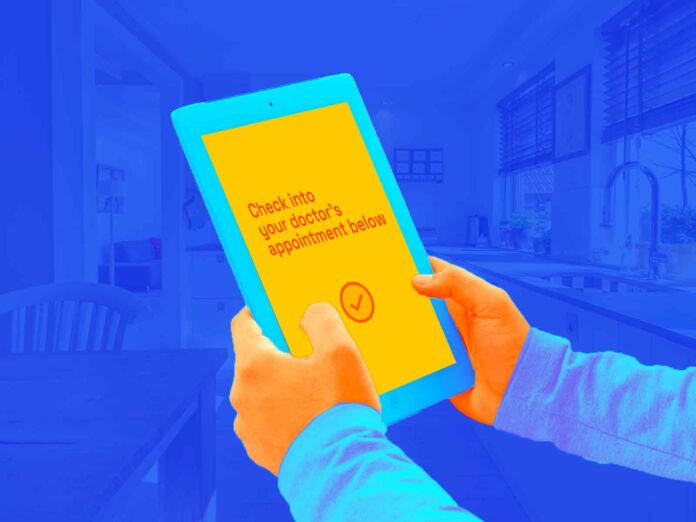
The urgency for digitizing healthcare today is stronger than ever. Hospitals are facing numerous mounting pressures, from financial solvency to staff shortages, alongside high demand for healthcare services from an aging global population. Healthcare operations, including facility management, are in dire need of a digital transformation — and Real Time Location Systems (RTLS) are a first step to creating a smarter, more efficient hospital.
RTLS is a set of technologies that enable the location of people, assets, or objects to be continually tracked and monitored. It uses tracking devices, a communications network, geospatial analysis, and a centralized management system to enable administrators and users to interact with location information in real time and to study tracking data for patterns that indicate problems or opportunities for improvement.
These sets of technologies can be instrumental in the smart hospital, as the technology has been proven to enhance patient experience, improve the efficiency of assets and staff, and reduce operational and maintenance expenses. RTLS collects data from intelligent devices like tags and badges that is then aggregated, analyzed, and leveraged to support data-driven decision-making.
Here are four ways RTLS can improve hospital operations and help create a smarter, more efficient hospital:
1. Leads Patients to Care
Ideally, the smart hospital experience would begin at home, enabling patients to check in through an app, specify preferences, and receive guidance to an assigned parking space upon arrival. Inside the hospital, the RTLS system would lead them to their destination, notifying staff along the way.
App-based wayfinding is a product of a well-implemented RTLS system. The RTLS-turned-wayfinding technology proves crucial in navigating complex hospital layouts, easing the burden on staff and enhancing the patient journey. Real-time updates on treatment schedules and wait times benefit both patients and staff, optimizing patient flow, reducing wait times, and expanding treatment capacity. Over time, trend data could drive further cost and efficiency improvements, and even identify underutilized spaces for repurposing.
2. Data-Driven Space Adjustment Needs
Hospitals can use a lighting-based RTLS system or integrate sensors into their existing lighting fixtures — and then connect their Occupancy API to existing building management systems. After installation, hospital managers can view time series data on space utilization needs to determine space adjustments. This can help managers decide if space should be reconfigured, expanded, or decommissioned.
3. Saves Valuable Staff Time
Research indicates that hospital staff spend 72 minutes per shift searching for medical equipment, diverting attention from patient care. Additionally, on average, between 10-20 percent of a typical hospital’s mobile assets are lost or stolen during their useful life, with an average of $3,000 per item.
All this adds up to a lot of time and money wasted for any size hospital. RTLS can not only solve these challenges for hospitals, but it can also be a fundamental component of a hospital’s overall digital transformation. When executed correctly — aligned with precise outcomes and integrated into the broader digitalization strategy — it can yield rapid and measurable returns in the form of time and money saved.
One large, urban California hospital uses RTLS to track the location and utilization of heart monitors, pump suction, wound vacuums, ultrasounds, and iPads on the outpatient floor. Tagged equipment can transmit location and maintenance data to the hospital’s IoT systems via a comprehensive lighting-based sensor network.
Consequently, staff can efficiently locate needed items, enhancing both staff productivity and the patient experience. Status tags offer immediate insights into equipment usage and condition, triggering alarms for low inventory or assets moving beyond designated areas. By maximizing the value of underutilized assets, this hospital can reduce investment and ongoing maintenance costs.
4. Enhances Patient Experience and Safety
Moreover, RTLS can enhance patient flow and experience. Patients are increasingly expecting digitized healthcare experiences in line with the digital experience in other aspects of their lives. Integrating RTLS into patient-oriented apps can yield significant benefits. This not only increases patient experience, but staff experience by making the day-to-day easier to log, locate, and care for patients.
Additionally, The Occupational Safety and Health Administration (OSHA) cites that sources of violence for healthcare staff can range from patients and visitors to facility intruders, and even include co-workers. As tensions increase within hospitals and healthcare facilities due to increasing staff shortages and shifting visitation restrictions, 20 percent of U.S. registered nurses reported increased workplace violence in a recent study. RTLS badge tags with panic buttons allow healthcare workers to signal when they are duress discreetly, increasing both staff and patient safety.
The applications of RTLS in healthcare settings are endless, and the journey toward a true smart hospital is intricate – and must be part of an overarching digital transformation or IoT smart hospital solution. When implemented effectively, RTLS is a valuable asset in a hospital’s digital infrastructure, readily scalable and extendable.
Tweet
Share
Share
- Wayfinding
- Asset Tracking
- Device Management
- Hospitals
- Location Technology
- Wayfinding
- Asset Tracking
- Device Management
- Hospitals
- Location Technology
